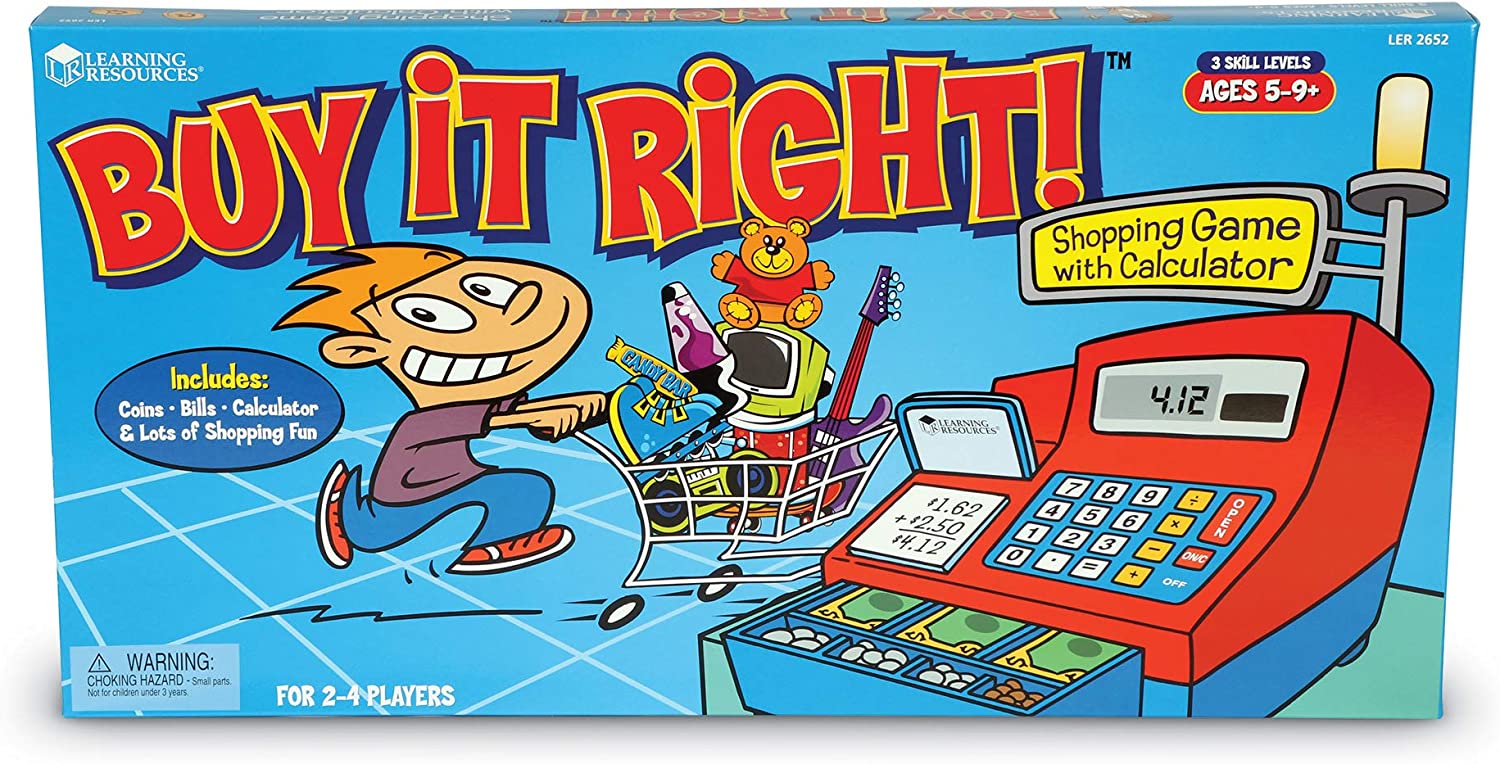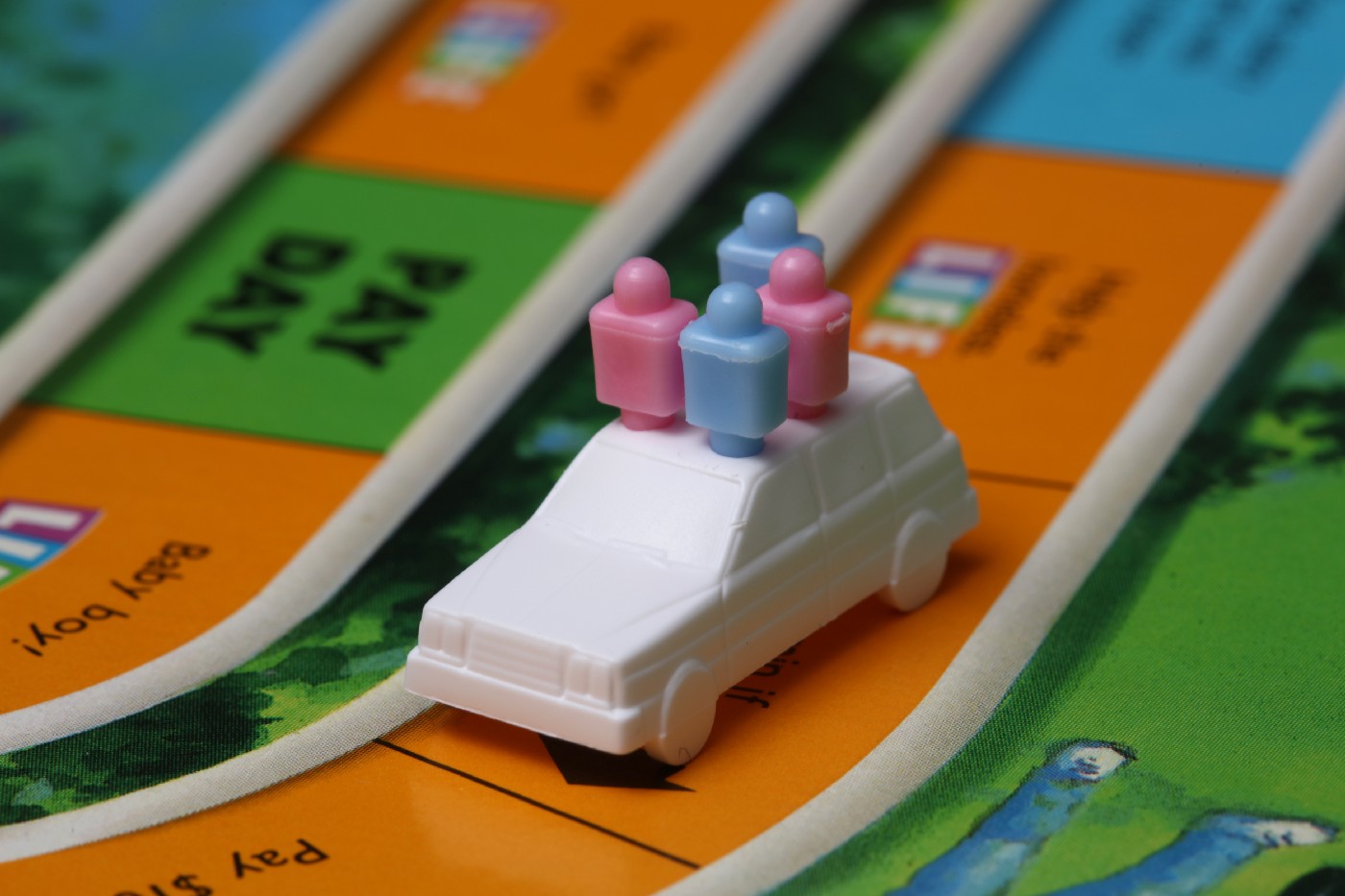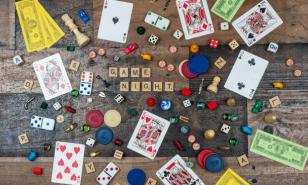[Top 10] Money and Financial Board Games For Kids

Game nights are a special time to bond with your family. And when you have small children, you want the games you play to be both fun and entertaining, but at the same time, you want them to learn something new in the process, such as money and what to do about it.
We've come up with a list of the top 10 best board games that you can play with your kids right now to teach them the importance of money, starting with games that can be played at a young age all the way to their teenage years. Enjoy!
10. Exact Change
When teaching your kids the importance of saving money for the future, it’s important that they start with the basics, such as recognizing each coin and bill. Exact Change is a great game to play to help them learn that.
Exact Change plays a lot like Uno, where you try to be the first player to get rid of all of your cards in your hand, so it’s simple gameplay that children can pick up quickly. And just like Uno, there are wild cards that can act in place of a card that was precisely down, and cards that force you to put cards back into your hand. Unlike Uno though, the cards have US coins all the way to the $1.00 bill.
The gameplay is simple. Depending on what card is played beforehand, you either need to match that with a card with the same amount of money, or you need to play several coin cards that match that amount of change.
The first person to lose all of their cards is the winner.

Children can learn about coins using uno-esque gameplay!
Rather than using fake coins, this game opts for pictures on cards, which is really nice for when you start kids off and it's less cleanup time after you are done playing. Also, if you plan to teach your kids about money at a very young age, it would be better to have cards representing change rather than loose coins that could potentially be swallowed by curious children.
Buy this game if:
- You want coinless gameplay to start your children learning about counting change.
- You and your kids are familiar with Uno gameplay.
9. The Allowance Game
After you have taught your children how to recognize money and to count loose change, it is now time for the next step. When kids are around the 5-6 year age group, you can typically start introducing allowance. If you do that, then you want them to understand how to best use that allowance, right? Telling them what to do may not be enough, but if you make it fun, it has a better chance to stick. How can you make it fun? Play a game about it.

The Allowance Game plays like Monopoly
The Allowance Game has gameplay similar to Monopoly. You start out with a certain amount of money and move around the included board with dice rolls. You earn by investing, which can depend on what spaces you land on and what decisions you make, such as purchasing lemonade, going to the bank, etc. You can also lose money by landing on spaces where you spend money, including going to the mall.
You continue around the board until you or another player is the first to earn $20.
Buy this game if:
- You want to teach your kids about the benefits of spending or investing their allowance.
8. Buy It Right
Imagine taking your children with their allowance and going to the store. There are so many things that they could buy there! They want to buy so many things there but they only have a certain amount of money to do it, so they need to think carefully. Buy It Right can teach them to prepare for that.
The goal of the game is to purchase items that have colored backgrounds. Collecting one (or two depending on how you play) of each color wins the game. You start out with $25 and go around the board buying items in a store. When you land on a space that encourages you to purchase, you flip up a face-down tile from a pile in the middle of the board. Then you roll three dice to determine how much you are going to pay.

Teach kids the importance of spending money wisely
Naturally, you’ll want to spend the lowest amount possible. For example, if you wanted to purchase shoes, and you roll with a 5, 4, and 2. You’ll want to arrange it so that you spend only $2.45, so using the $5 bill and getting the change back would be the best option.
The first person to get all of their colors first is the winner.
While intended for slightly older audiences (4th-6th graders), this game can be tweaked to be played with younger kids. Learning how to count and save money is a great way to teach kids how to make changes and what bills and coins to use to purchase the items.
Buy this game if:
- You want a game that shows about making wise purchases. You want to show your kids how to avoid making big purchases.
7. Cashflow for Kids
Not only should you be teaching your kids how to wisely spend or save money, but you should also teach them how to invest it for the future as well, and how to make money back over time. Cashflow for Kids can teach them that!
The gameplay is really simple. You roll dice and move your token to the appropriate space. If you land on a green space, you get an asset or something that, while it costs you money at first, will help you earn it back over time. If you land on a space that is red, you end up with liability, and you end up purchasing things that cost you more money over time, or a large amount in one go. Pass the “Pay Day” spots to earn some money back.

CashFlow For Kids teaches about assets and liabilities
The first player to start earning more money than what they started out with is the winner.
While a little hard to comprehend at first, this game can teach your children the opportunity of investing. With inflations affecting nearly every purchasable good in the market, it’s important for kids to learn about what is good to purchase and what is important to invest in.
Buy this game if:
- You want to start teaching kids about the benefits of investment as well as liability and assets.
6. Money Bags
This is another game that uses fake coins and dollar bills for play, but the game will mostly use coins. In the game, you start with a bag of money with $0.41 (so you have a quarter, a dime, a nickel, and a penny) on the board. You roll a die and move that amount of space.
When you land on a space, it will encourage you to add a certain amount of more coins to your personal amount. If you land on such a space, you need to spin a wheel that will tell you what coins you cannot use to add that amount. For example, if you landed on a space that says you need to add $0.72 and you spun the wheel and learned you could not use dimes, then you need to add two quarters, four nickels, and two pennies to your personal collection of coins.

Money Bags: the game that encourages you to save your change!
Whenever you land on a special space with a dollar sign, that’s when you collect what is in the money bag for yourself and replenish it with another $0.41 cents. Certain spaces will ask you to “change it up,” meaning you can take some of your coins and convert them into larger bills.
The game is over when all players reach the end and whoever has the most money wins.
A great example of using math and coins, this game is another way to teach children how to make change while using simple gameplay to make it fun.
Buy this game if:
- You want kids to have a hands-on experience with handling realistic coins
- You want simple gameplay that will also teach math skills.
5. Monopoly
If you need a good party game and want something that is familiar to your children, then bring out Monopoly! It’ll be a great opportunity to teach them more about making investments and teach about unforeseen issues.
Each player goes around the board by rolling dice. There are spaces that they can land on where they can purchase land to build houses (and eventually hotels). If players land on a space that you own, they owe you money. The more houses and hotels that you add to that space, the more money that you will earn from players that land on it. But be careful, because other players are doing the same thing, so you may have to owe money to them soon!
There are also spaces where you draw cards to either earn more cash through events or lose money (or even go to jail).

Go around the board and build your houses!
Players continue around the board in this fashion until they either cannot pay what they owe to others or they run out of money. The last player standing is the winner.
This is one of the most familiar names on the market and is another excellent example of earning money through making investments and taking risks and also learning about unforeseen expenses that can come up. The game has no coin options for cash, so it teaches younger audiences about counting and paying using dollar bills.
Buy this game if:
- You want a board game that is familiar to play.
- You want to teach opportunities to kids about unforeseen events that may affect their money.
4. Pay Day
A lot of adults wait anxiously for their next paycheck which can take up to a month for most. While waiting on your next paycheck, maybe you can take what you have and invest it towards getting more money. In Pay Day, you do exactly that.
Players begin by taking $3500, then roll a die to move through the board, which represents a month on a calendar. Each space they land on may give them an opportunity to buy a business that they can sell later for more money. If they don’t have the money to buy it right away, they can borrow some from the bank (which they must pay back eventually) or trade businesses with other players.
There are also spaces where they receive mail, which can be just junk mail, but they will receive the occasional bill which must be paid. If it cannot be paid, then it can be borrowed, but (again) must be paid back eventually.

Go through the calendar and save as much money as you can!
If you do not pay off your loans, then you need to add a 10% interest rate which goes into the next month.
This is one of the few games out there that shows kids about the time that it can take to earn money as well as teach about taking loans and paying back the money. It also teaches about paying bills and interest rates. These are important lessons to learn before they begin handling money on their own.
Buy this game if:
- You want to teach your kids about monthly payments and investments.
- You want to show kids the pros and cons of loans and borrowing such as interest rates.
3. The Game of Life
Forrest Gump once said that life is like a box of chocolates: you never know what you’re gonna get. In The Game of Life, while you may not get an actual box of chocolates, you’ll never know what you’re gonna get when you play.
Players begin The Game of Life by either deciding to take on a career or get a college degree. Both have some advantages and disadvantages, so choose wisely. Then you spin the number wheel to move a certain amount of spaces.
If you pass a payday space, then you collect the salary that is on the card that you chose at the beginning of the game. There are also action cards that, depending on the color, force you to take an action that will either help you earn money or cause you to lose some.

Learn how the choices you make in life can affect your finances.
There will also be decisions that you make throughout the game such as getting married, taking on a different career, adopting pets, or having children. Each choice will affect how much money you earn throughout the game.
The player with the most money at the end of the game is the winner.
This is a fun way to learn about the facts of life without actually going through it first. Kids will learn about careers and how they make money and how decisions that they make in life will ultimately affect their finances.
Buy this game if:
- You want a money-making game that gives a loose representation of how choices affect your finances.
- You want gameplay that kids and adults can play together and enjoy.
2. Big Money
In a world where everyone is rich, who will become the richest of them all? In Big Money, you strive to become that.
In Big Money, everyone begins with a start-up asset card. On your turn, you roll five dice and a special die called the “industry” die. If the industry die matches the symbol on your start-up asset card, you get more money. If you’re feeling lucky, you can keep playing on your turn and roll again to try to earn more, but it may also go against you and you earn less.

Collect assets for more opportunities to earn money!
Another way to earn more money is to purchase more assets, which increases your chances of the industry die landing on what you want. However, if you keep rolling you may land on a die that causes you to lose lots of money.
While not necessarily a learning game, this is a nice casual game that you can use to teach kids about taking bigger risks and how it sometimes causes you to lose everything without actually doing that in real life.
Buy this game if:
- You need another game that teaches about assets as well as risk.
1. Catan
Welcome to Catan! A land of prosperity, a land of growth, and a land of opportunity. As a settler of Catan, your goal is to build your civilization and earn victory points. You gain victory points by placing settlements, earning accomplishments, and purchasing development cards. The first play to 10 victory points is the winner.
You’ll be doing a lot of placing settlements, and the only way to do that is with resources. Need sheep or steel? Maybe someone is willing to trade if you have something else that they need.

Catan encourages you to use resources to win.
While this is not a game that focuses on money or finances, this game was selected for this list because it is a game about trading and using resources wisely. Resources are just as valuable as money in a lot of places, and as an older kid or teenager, there is no better time to start to grasp the concept of strategic resourcing, and that’s why Catan makes this list.
Buy this game if:
- You want to teach about using resources to your advantage as well as wise trading.
 Home
Home PC Game Trailers
PC Game Trailers News
News Menu
Menu
















Latest Comments
1 Gamers Commented on this game. ADD YOURS.
All Comments (1)
Pects1974 1 year 3 months ago
I have never seen such a post before today, in which so many great games have been told. On this post, you will find a list of Money and Financial Board Games For Kids. At the same time, I got to see a link on a view website and then I visited that link. An article was written on that link on how to earn money. In which casino games were mentioned. I found this information useful.
Reply